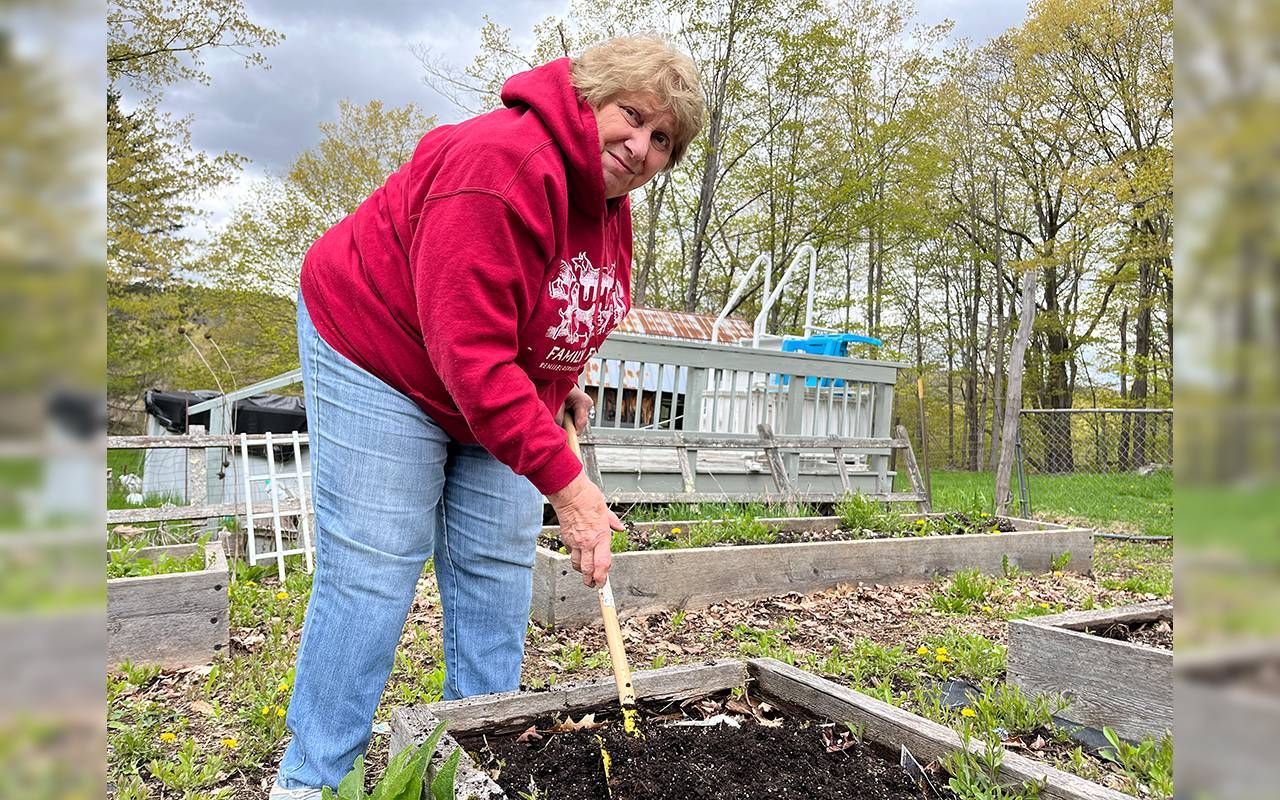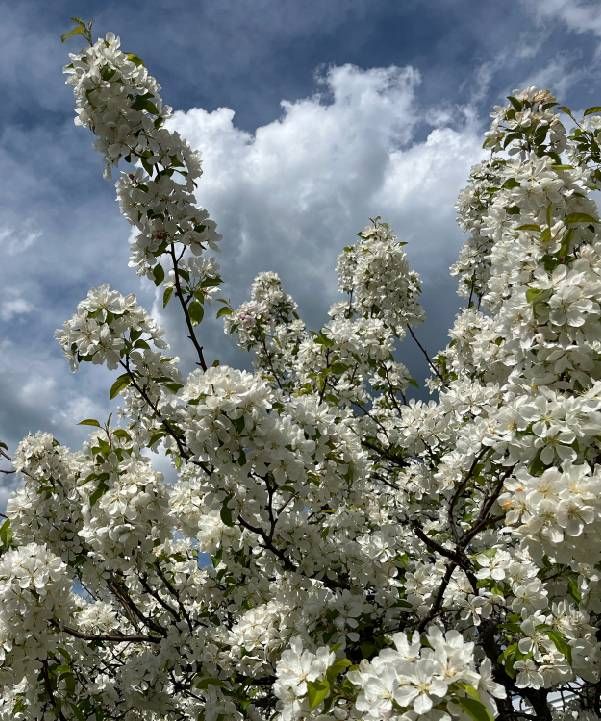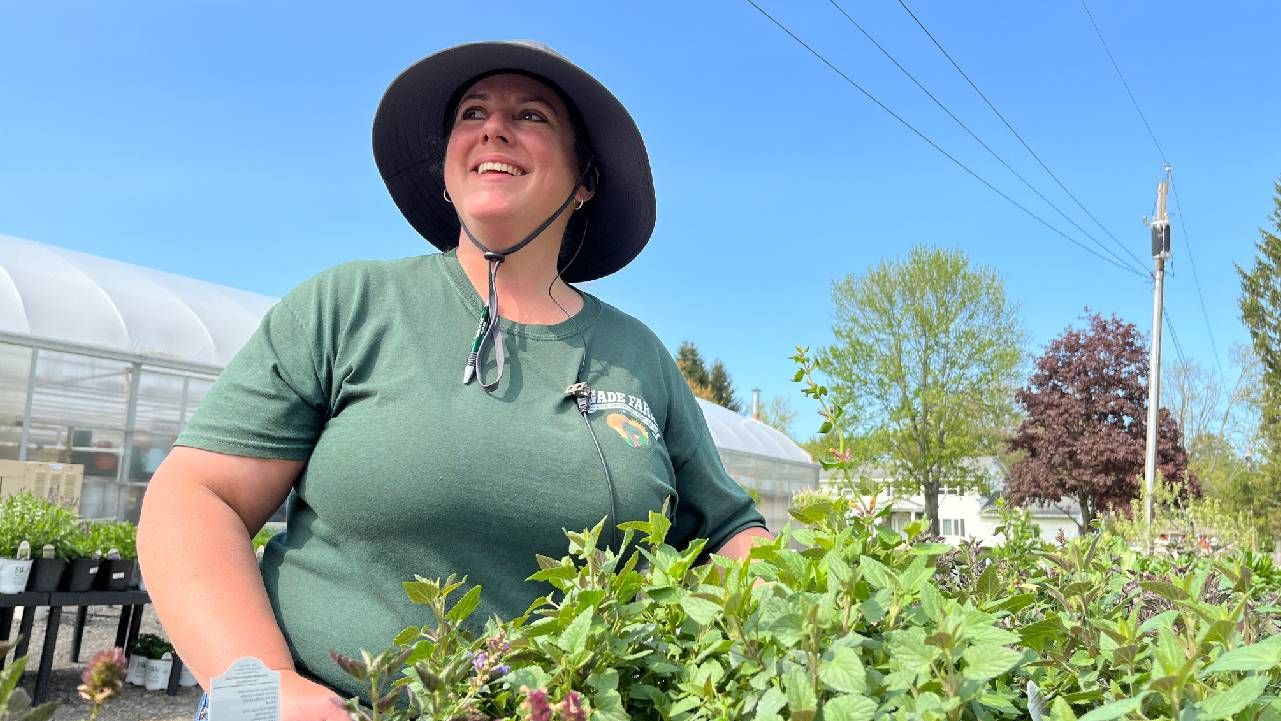Gardeners Beware: Climate Change Is Setting a Trap for You
More crop-killing “false springs” are bedeviling gardeners and farmers alike
Rosemarie Kuhar has been working the soil around her Upstate New York hamlet for nearly all of her 72 years. And it's not just her age that's making spring gardening chores more daunting. Creeping shifts in the climate are laying traps for gardeners and farmers alike.

Kuhar has learned to be cautious about planting. Some of her neighbors hold out until Mother's Day, but she favors Memorial Day. "Anybody that rushes getting their tomatoes in the ground, you're not doing them any favor," she warns. "I've never jumped the gun."
But it's tempting. Her garden calendar used to be somewhat predictable but lately the climate has been sending mixed signals. "I would say everything is at least three weeks ahead of time, to where it used to be," she says. Looking around her property in early May, she notes, "The trees were never out this time of year — ever."
A major thorn in Kuhar's side is the "false spring" — a brief warm stretch that is followed by a late-spring freeze like the one she experienced this year. In April, a weeklong warm-up ran high temperatures to 83 degrees for two days running — and then, wham-o: it was back into the 40s with overnight lows near freezing and two weeks of relentless rain.
Running a Fever
Though a one-month sample is hardly a measure of climate change, take this April, just for illustration. In the nearest major urban center to the Kuhars, Albany, New York, the average temperature for the month was 52.6°F — a sultry 4.6° above "normal."
"The trees were never out this time of year — ever."
If that doesn't sound like much of a change, to use a favorite analogy of climate scientist Katherine Hayhoe, if your body was running a temperature four degrees above normal, that's a fever of nearly 103. You'd definitely be feeling it and many of your fundamental body functions would be reeling. Nature is similarly stressed by whipsaw temperatures, especially during the critical spring budding season.
Most anyone living in the mid-latitudes has seen false springs come and go — but with the changing climate, the stage is set for more frequent and more intense temperature swings, according to Cat Chamberlain, an ecologist with The Nature Conservancy who has made false springs a major part of her research.
Tricked Into Budding
A false spring occurs whenever temperatures dip below freezing, after plants and trees have taken their spring cues to start budding.

"The reason it's called the false spring is the trees were fooled into thinking that the freezing events were over, and it was warming up," explains Chamberlain. "So they start their budburst and show their leaves, and then we get a cold snap."
The critical period when plants first begin to bud is when they're highly vulnerable. "In order for a false spring to actually be damaging, there have to be leaves that are starting to form on the tree," says Chamberlain.
"Once the leaf is fully formed, it's actually a little more durable," she adds. "But material that is just developing is especially susceptible to these freezing temperatures."
Chamberlain's work shows that two cogs in the usual machinery of spring are out of sync. "Growing seasons are getting longer and especially in the spring, we're starting to see that leaves are coming out earlier, but these big warming spells or cold snaps aren't really shifting at that same rate as budburst is increasing."
Weeds on the Move
Just up the road from Rosie Kuhar, her 69-year-old brother, Barry Kuhar sees the same shifts from the farmer's perspective. "It's definitely become more of a battle," he says. It's a battle he's fighting on multiple fronts; in more disease threatening his 80 head of beef cattle and the invasive spotted knapweed creeping into the "couple of hundred" acres of hay that he raises each year.
"It grows and it gets stocky and it's so nasty," Barry Kuhar says, "'the cows won't even eat it if there's enough of it."

So pronounced are these changes that the Plant Hardiness Zones established by the U.S. Dept. of Agriculture are shifting northward. The U.S.D.A. divides the country into 13 of these zones based on average overnight low temperatures. They form a guide to which plants will thrive, where.
"It's really helpful in determining what, what you might, what's likely to be successful in your environment," says quantitative ecologist Ailene Ettinger, also with The Nature Conservancy. "It gives you a general sense of how cold it gets in the winter, which can be important for a lot of plant survival."
Pests Follow the Warmth
These east-west swathes are based on annual minimum temperatures, averaged over 30-year "normal" periods. So someone who's spent most of their gardening life in say, Zone 5 (colder) may suddenly find themselves in Zone 6 (warmer) and be able to grow less cold-tolerant plants.
As a concrete example, the coldest average temperature in Nashville, Tennessee is 9.5°F warmer than it was between 1951 and1980, an increase equivalent to a shift from Zone 6 to Zone 7, according to an analysis by Climate Central, a non-partisan climate think tank based in New Jersey.
This northward shift also has a dark side, as pests tend to migrate along with the warming temperatures. In the Helderberg Hills, where the Kuhars live, the emerald ash borer, a Southern import, is killing ash trees at an alarming rate.
"Emerald ash borer is one that we're seeing expand as things are getting warmer," says Ettinger. "It's able to survive more and its populations are expanding into places (where) it wasn't a threat."
Shrinking Snow Cover
"We're definitely seeing changes," says Amy Castillo, who's in her 30th year at Gade's Farmstand and Garden Center in Guilderland, New York. It's been a tough spring in the Albany Capital Region. She ticks off some examples:
"No forsythia blooms, no cherry blooms, no peaches — none of those blossomed because we had the fluctuation of temperatures where it was really warm and then it got really cold, and they burned off. So a lot of the ornamentals and the fruit are not going to happen this year."
Statistics bear her out. This April, Albany was "much warmer than normal and wetter than normal," according to Climate Central, which adds that 2023 "stood out as the fourth-warmest April in Albany in data going back to 1874." It's not just a one-time fluke; in general, Aprils in Albany have heated up by 2.7°F since 1970.

Castillo says perennials are struggling because of a lack of snow as winters continue to warm and snowfall is often replaced by rain — or worse, ice storms. "The climate isn't the same," she says. "I mean, we don't have the snow."
Castillo says snow cover is "super-important" for plants. "It's like a blanket for them," she says, providing insulation in winter and gradual watering when it melts. When winters were consistently colder, it was actually better for many plants, especially perennials.
When It Rains, It Pours
Anecdotally, the Kuhars and Castillo all insist that they're getting stronger winds and more frequent droughts, a killer combination for shrubs trying to revive in springtime.
When rain does fall, it's well documented that more of it comes in extreme downpours — especially the Northeast. According to the National Oceanic and Atmospheric Administration, that region has faced "the most rapidly increasing frequency of extreme precipitation within the United States."
Though this has made all types of gardening more of a gamble — especially in northern latitudes, Chamberlain says careful choices about what to plant can improve your odds.
Plan Your Planting Carefully
"It's something for folks who are planting trees to think about, and be mindful of the species that they're planting," she says. "If they're going to be earlier bud-bursting trees or shrubs, and we're starting to see more of these late spring freezing events in the northeast, maybe consider planting an oak if you have the space, or something that's a little more robust."
The U.S. Forest Service has a Climate Change Tree Atlas that can help with these decisions. It ranks climate adaptation potential for 125 tree species in the eastern U.S., including tree adaptability under different warming scenarios for 185 urban areas.
"Climate change has wrecked everything."
The overall picture for gardeners: "I think it's getting harder," says Castillo with an ironic chuckle. "I don't know. As a gardener, I always lose a couple things every year but yeah, it's tricky."
As for the annual guessing game Rosie Kuhar plays with her garden, her caution paid off. The week after Mother's Day, a cold front swept across the Great Lakes and brought more freeze warnings to New York's Capital Region. A second false spring.
Kuhar sums it up very succinctly. "Climate change has wrecked everything."
How Climate Change Affects You
Check how growing degree days have changed in your local area from 1970 to 2021. You can also search any address or zip code in the US Department of Agriculture's latest plant hardiness zone map, which includes Alaska, Hawaii, and Puerto Rico. NOAA offers similar maps for the contiguous U.S., focused on shifts between the 1971–2000 and 1981–2010 normal periods.

Read More

